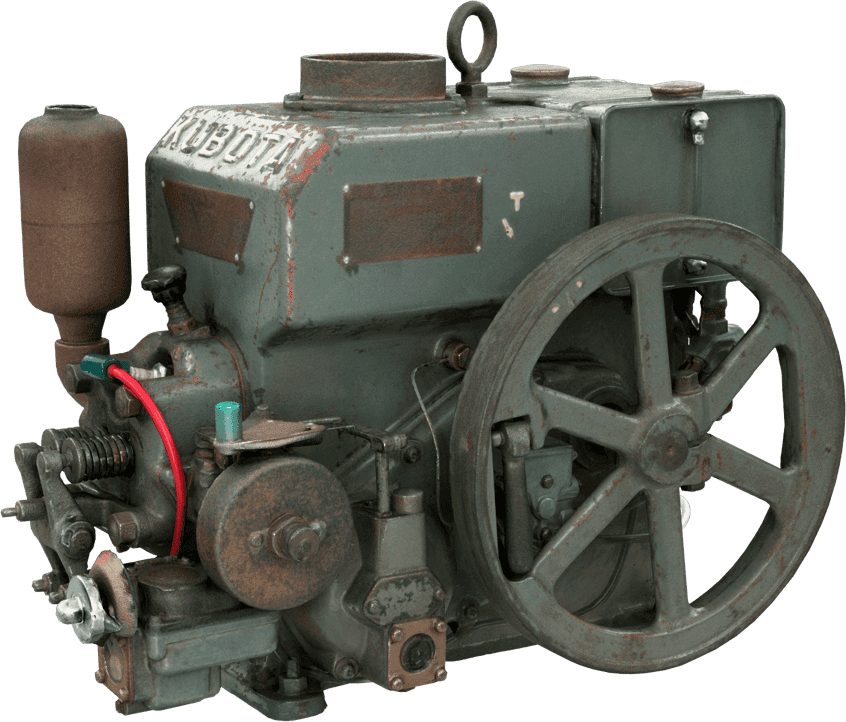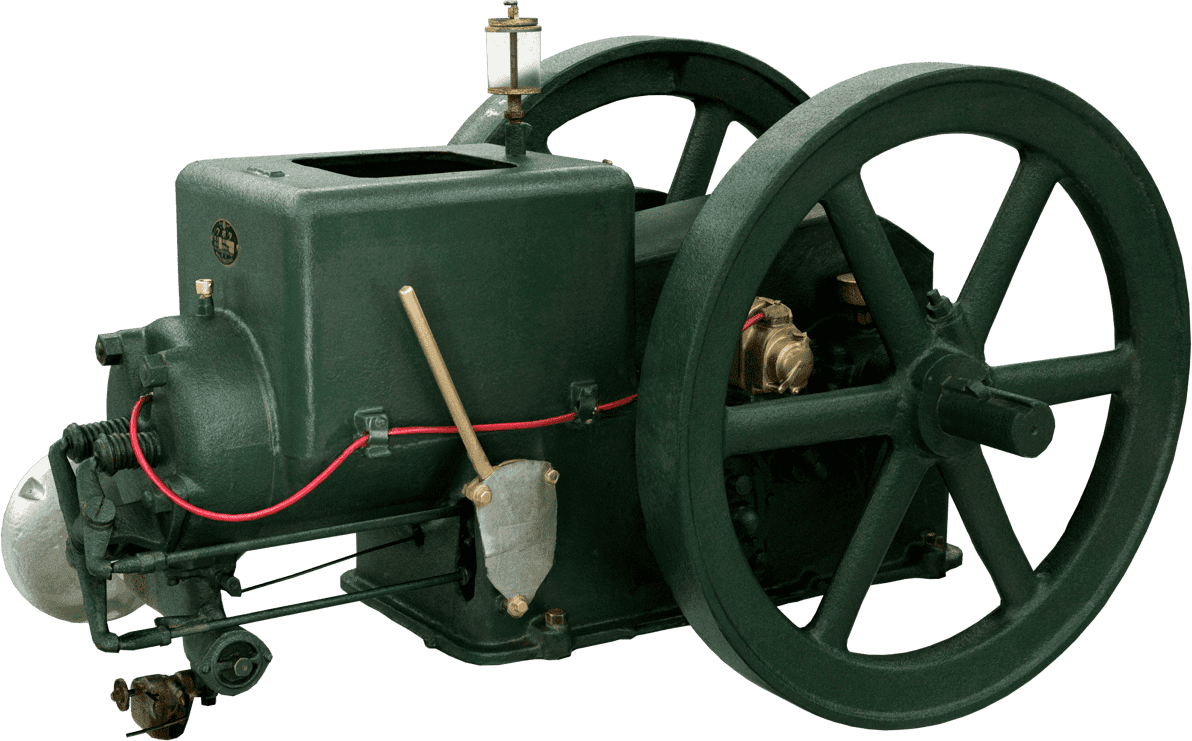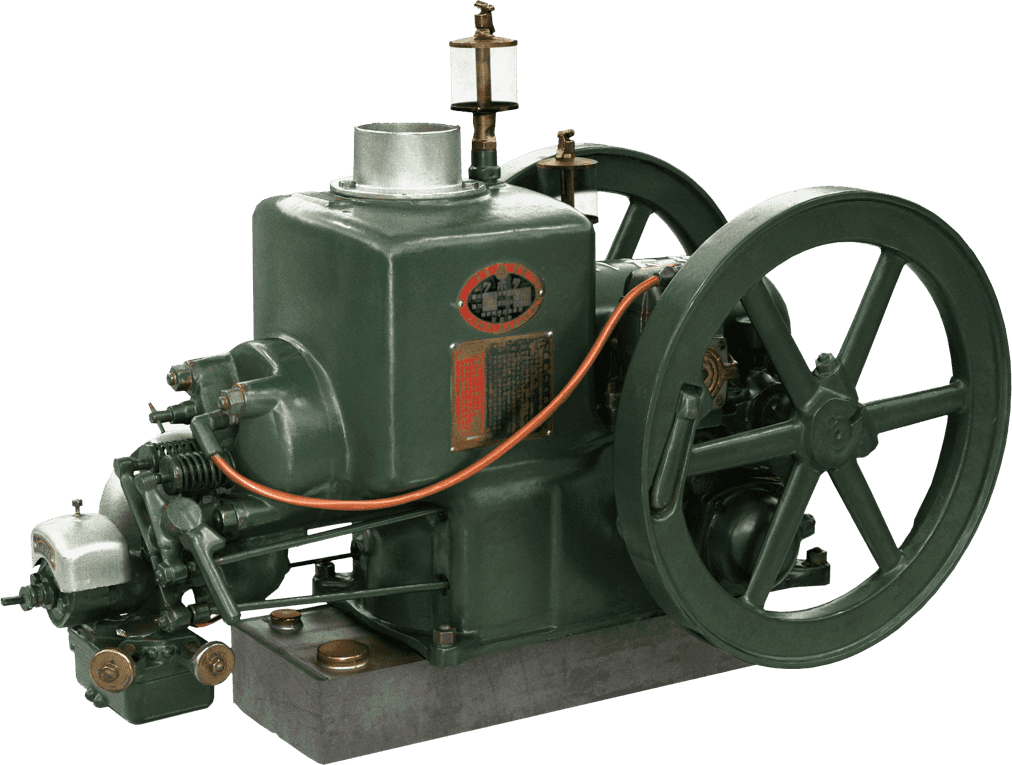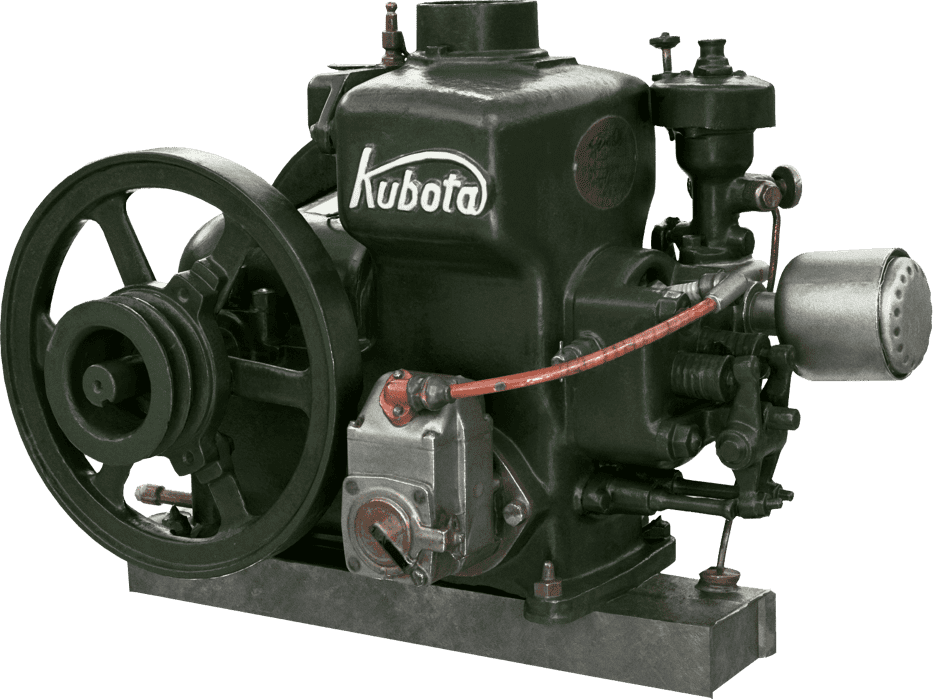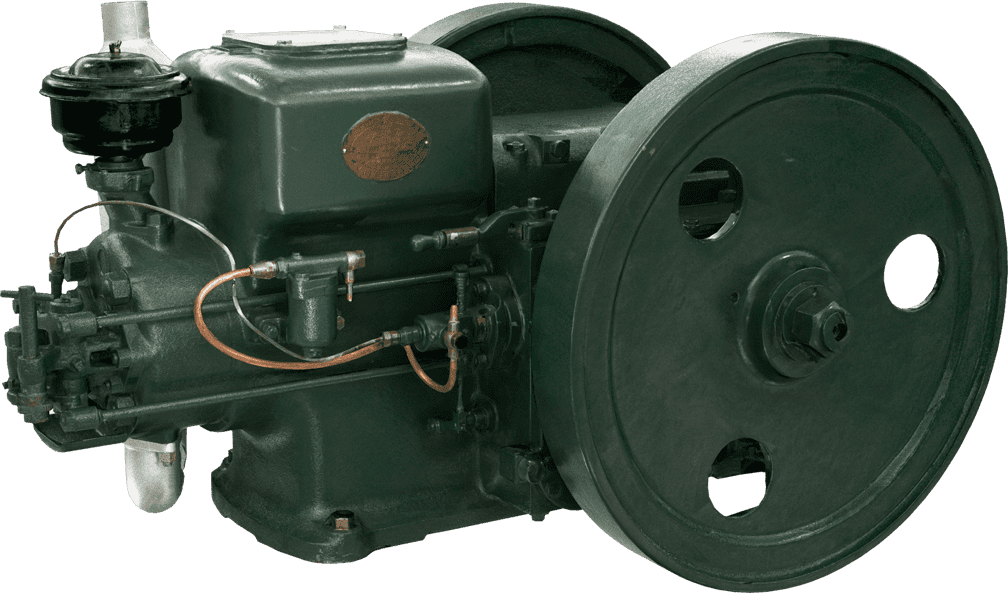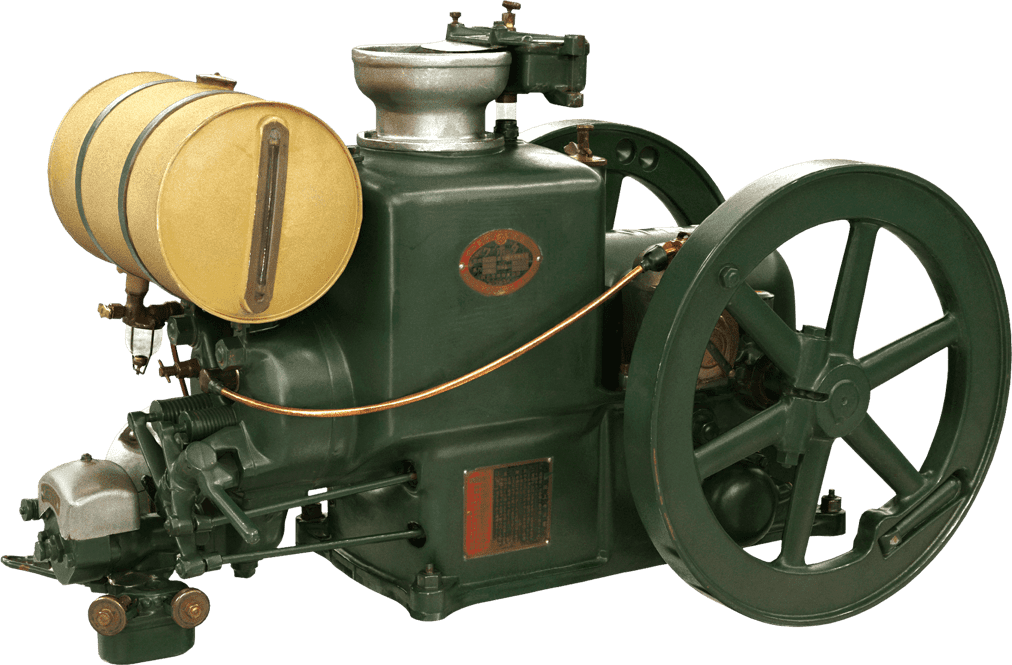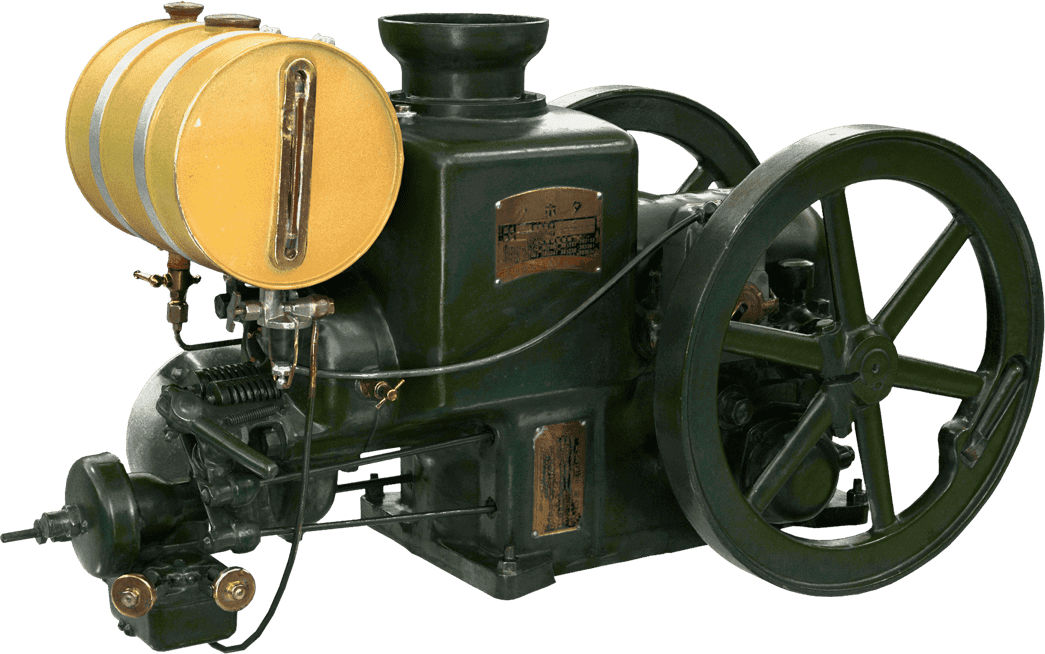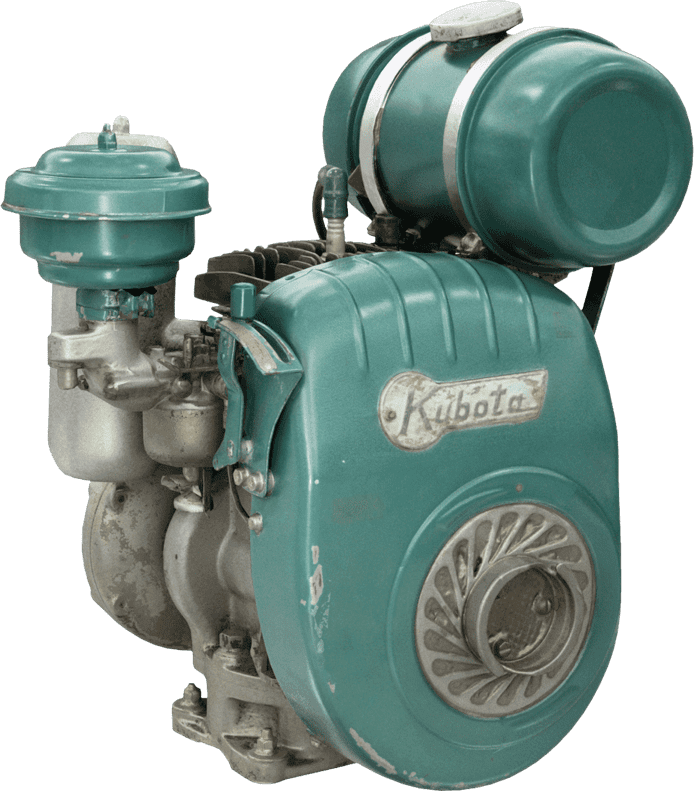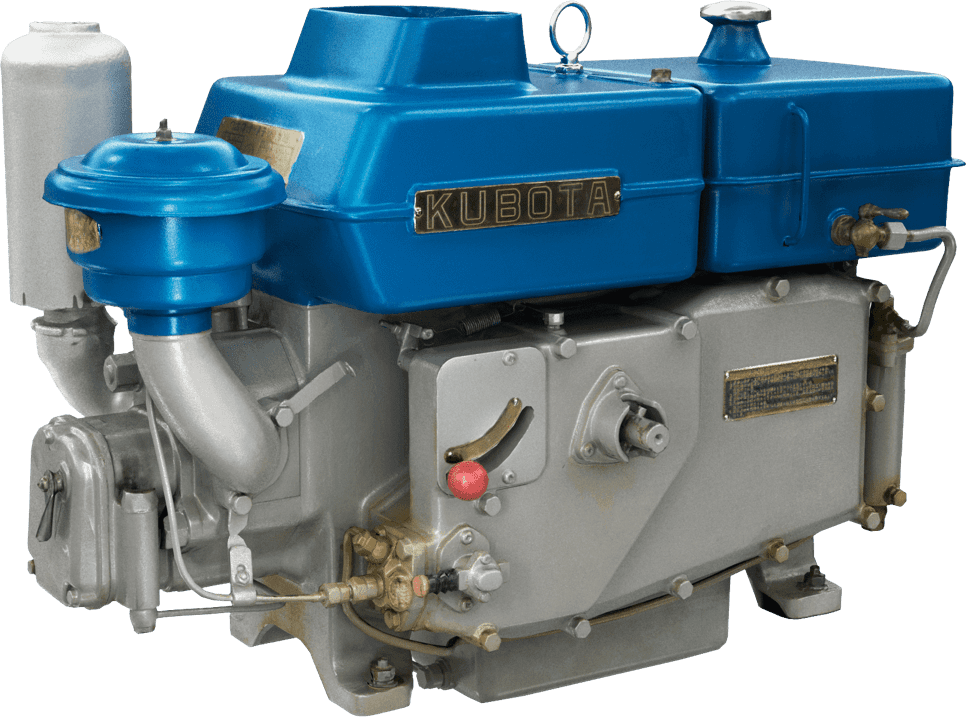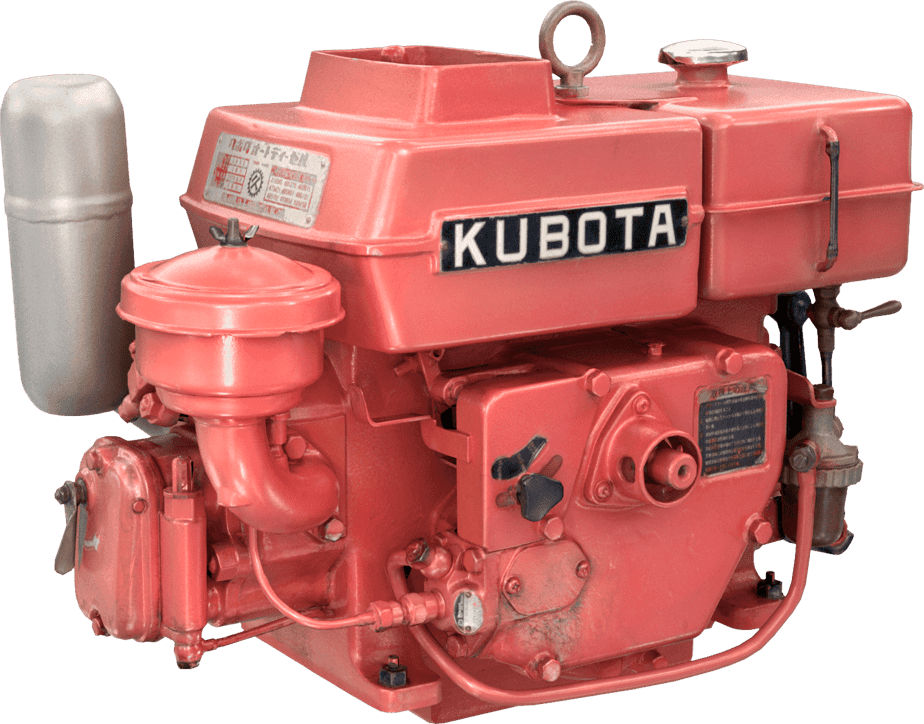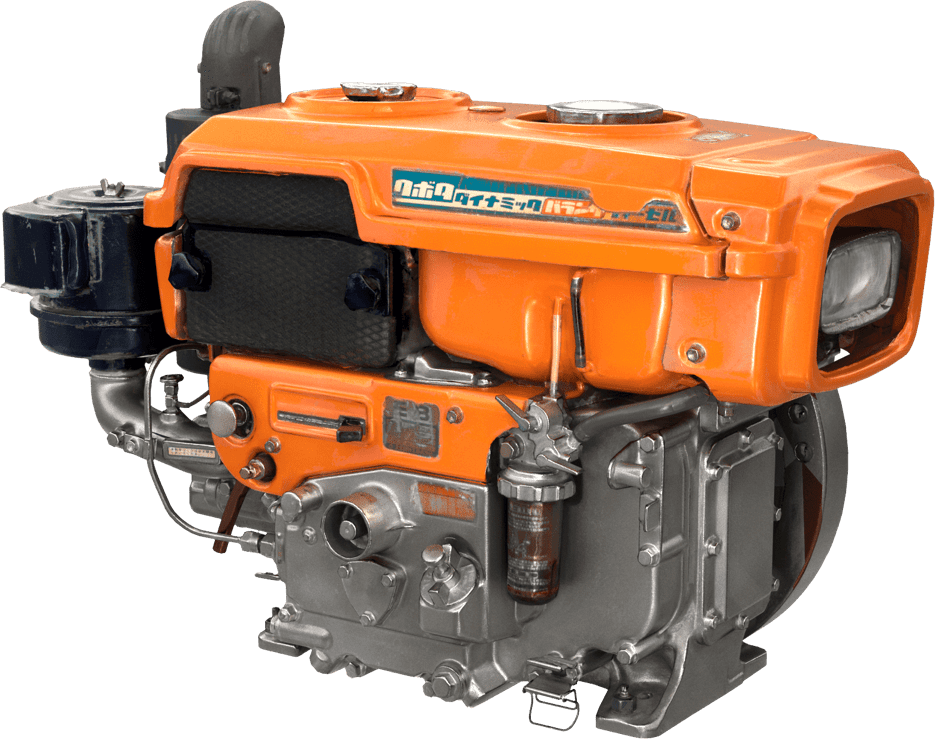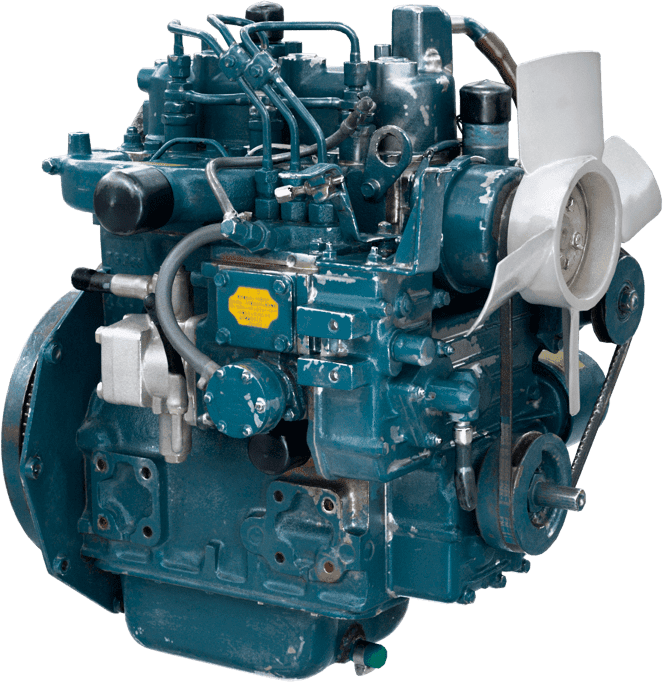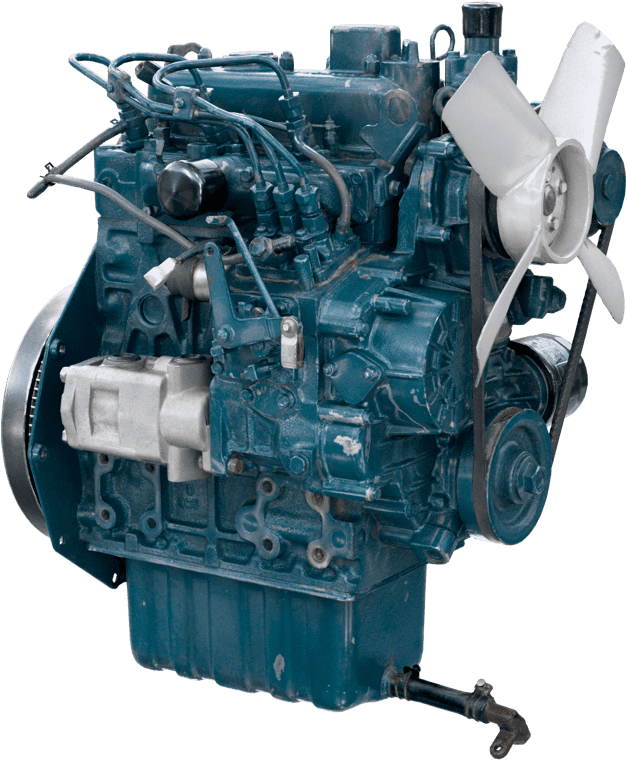features
Radiator
This model has a radiator. It was difficult to replenish the water when the hopper type of machine was installed on a tiller, and farmers were bringing buckets when going out to work on their fields. Kubota was the first in the world to fit a radiator to an agricultural engine to eliminate this inconvenience, and patented the design.
Automatic
This model automatically switched fuel from gasoline for ignition to Petroleum for continuous operation. Up to this point, users had needed to switch manually and time the switch themselves. This grew more convenient with automation. The "auto" in the product name indicates this feature.
specification
- Year
- 1955
- Fuel
- Petroleum
- Type
- Horizontal, water-cooled (high-speed)
- Cylinders
-
- Number of cylinders
- 1
- Rated output / speed
- 3.0/1800
- Length x Width x Height(mm)
- 640/453/495
- Dry weight(kg)
- 57.5
applications
-
Cultivator
-
Power Sprayer
-
Generator
-
Rice Husker
story

Postwar Reconstruction Increases Demand for Engines
A few years following the end of World War II, the Japanese economy had recovered from the chaos and was entering an era of free competition. Engines were valuable because they were useful for increasing food production, which caused demand to explode.Kubota resumed manufacturing engines, which were the heart of Japanese industry.
Photos

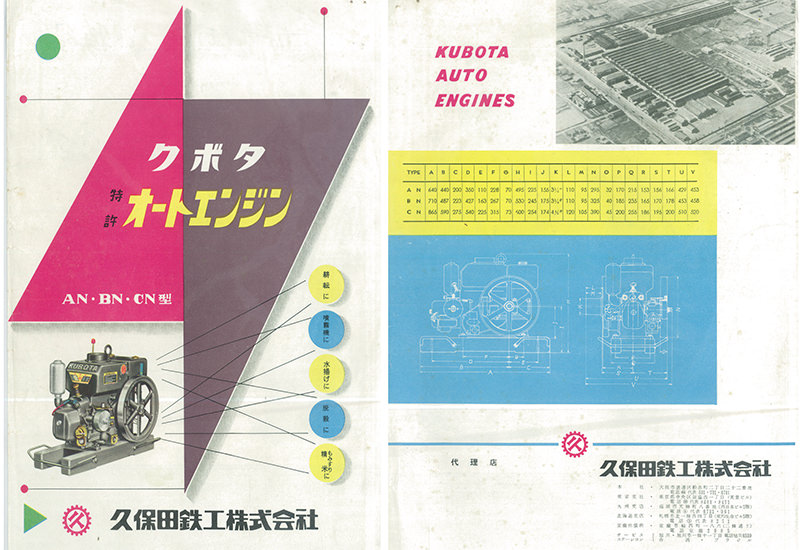
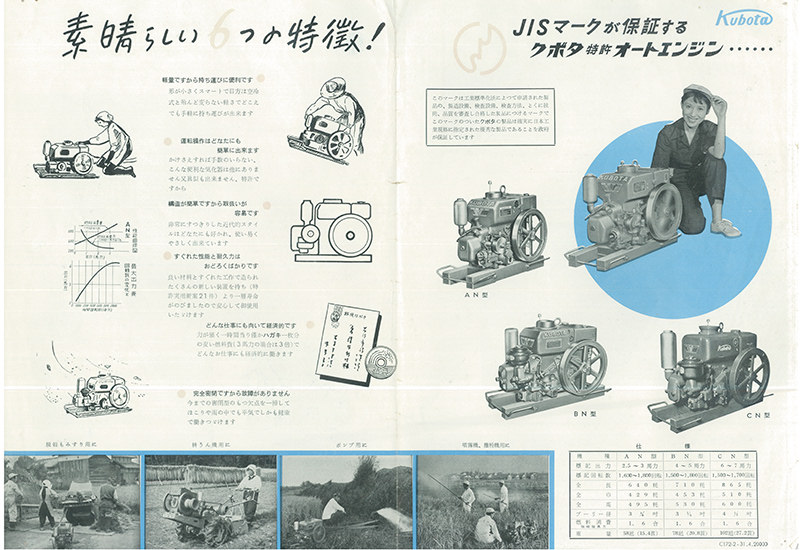
Discover other engines
